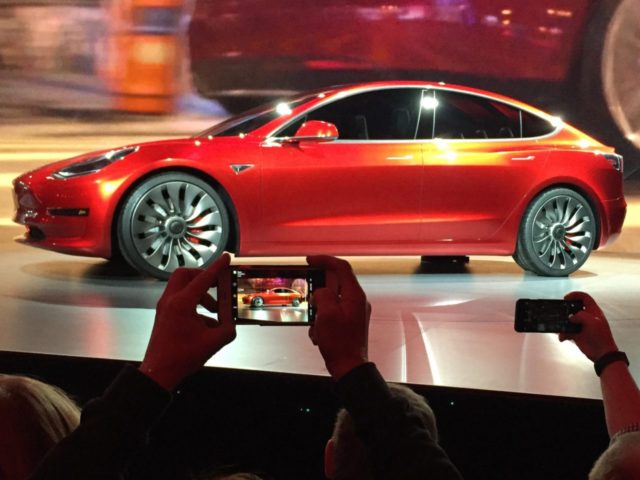Tesla’s Stock crashed on Monday, a day after Elon Musk tweeted that Tesla’s Model 3 had passed all regulatory requirements and initial units would begin rolling off the assembly line on July 7.
Musk tweeted that Tesla’s first mass-market-vehicle will have a “Handover Party” on July 28 to deliver the first 30 Model 3’s to customers. Musk stated that weekly production will grow exponentially from 100 cars in August to 1,500 in September. He added: “Looks like we can reach 20,000 Model 3 cars per month in Dec.” That would meet the company’s promise to deliver 80,000 vehicles by the end of 2017 and 500,000 in 2018.
The tweet caused Tesla Inc’s (NASDAQ:TSLA) stock to jump by 2 percent, to over $370 a share at the opening of trading. But then the stock plunged to under $353 for a 2.5 percent loss by the end of trading, as critics reminded investors that Tesla is still losing about $30,000 on every car it produces, has never met a production schedule, and was only profitable in one quarter due to booking larger-than-normal government subsidies.
The critics, who are closely watching the vendor parts deliveries, are estimating that Tesla’s weekly production will hit 30 in July, 250 in August, 1,000 in September, 1,875 in October, 3,250 in November, and then 5,000 in December. That works out to 45,800, or about half company’s estimate. But is also would mean that Tesla will be short $1.8 billion in cash flow.
The Tesla owners’ Forum estimates the company already has about $663 million in deposits. At $1,000 per deposit, that means there are about 600,000 Model 3s on order.
But despite having such a massive horde of customers’ cash in Tesla’s bank, Breitbart News reported in late February that respected debt expert Montana Skeptic was warning that Tesla was close to violating its bank “Fixed Charge Coverage Ratio,” the liquidity test for its revolving credit agreement. At Tesla’s current run rate, Montana Skeptic estimated that Tesla would be $900 million in the hole by June 30 and in financial default.
Tesla disputed the analysis, but on March 28 Tesla sold 5 percent of the company at a 17 percent market discount to China’s Tencent (OTCPK:TCEHY) for $1.8 billion.
Elon Musk stated at the shareholder meeting on May 31 that Tesla engineers can increase production by 1,100 percent by employing “physics-first-principles” to shape a new mode of industrial production that is “10 or even 100 times” more efficient.
Tesla has been hammered by a slew of key engineering talent leaving for competitors, according to articles by Electeck and the Silicon Valley Business Journal. But TechCrunch reported on June 21 that Chris Lattner, the key engineer that spent 11 years leading the development team for Apple’s “Swift” programming language, and made a high-profile jump to Tesla in January, had already left Tesla.
Tesla announced in October that the company had perfected all the hardware sensors needed to turn its cars into auto-piloted (self-driving) vehicles. Tesla trumpeted luring Lattner as the key engineer to finish the design and implementation of the auto-pilot software stack that would make Tesla the first to deploy fully self-driving vehicles.
Although both the company and Lattner said they were not a good fit, the turmoil would seem to indicate that Tesla now has a major engineering challenge that could significantly impact its scaling up of production and deliveries of the Model 3.

COMMENTS
Please let us know if you're having issues with commenting.